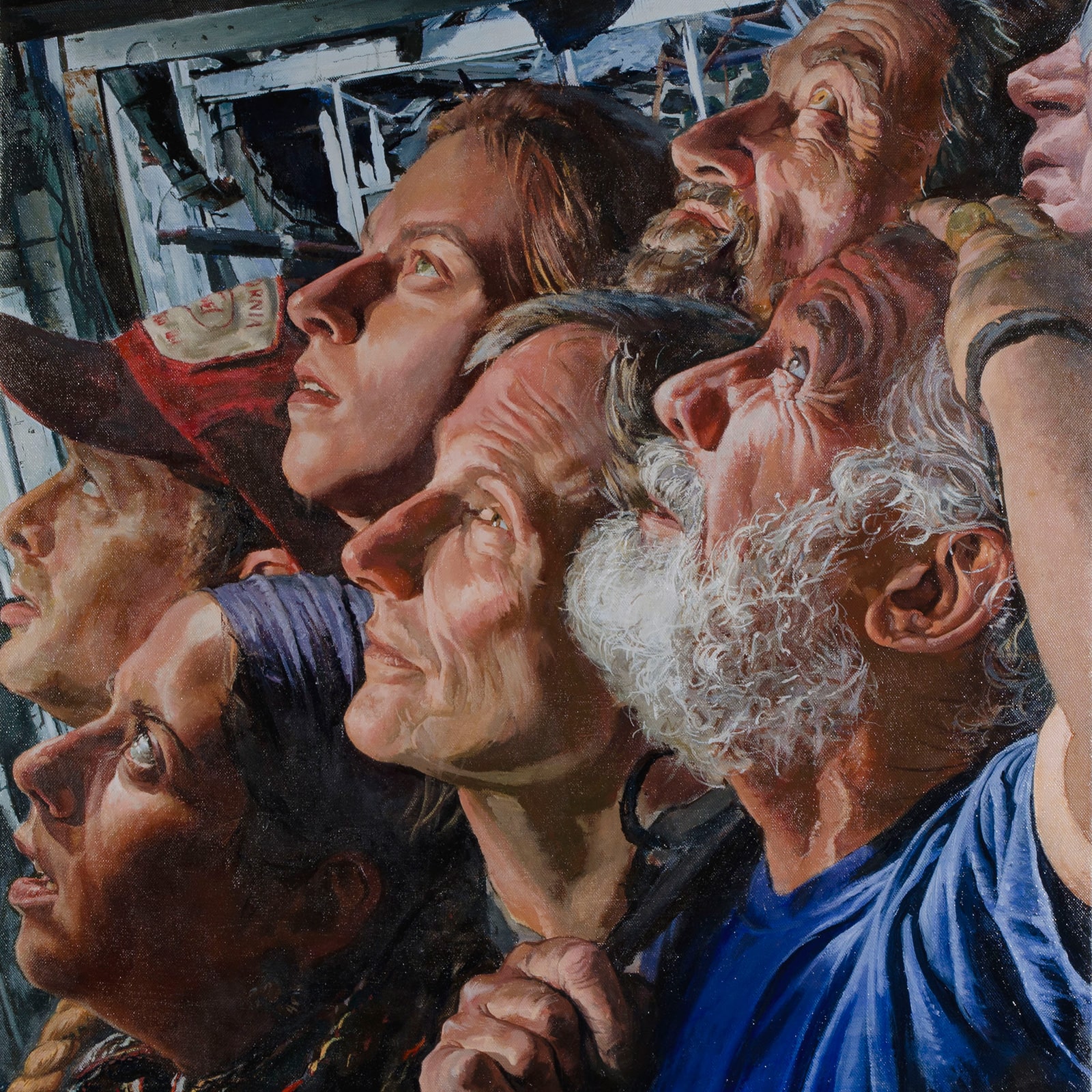Nathan Lewis: Visions

Nathan Lewis is a California-born painter and artist who received his MFA from Tufts University and the School of the Museum of Fine Arts, Boston. He has studied at the Florence Academy of Art in Italy and in St. Petersburg, Russia. Lewis has already opened two museum exhibitions in 2015, at the Housatonic Museum of Art and at the Oglethorpe University Museum of Art.
In his large-format, photorealist works, Lewis is interested in the intersection of virgin light and desecrated space. Decaying warehouses, fallen planks, splayed vectors of white light ignite the space and shift the focus from destruction to renewal. Like many post-Recession artists, Lewis is fascinated by the decay of modern spaces. His narrative is impacted by works like 2008’s Till We Find the Blessed Isles Where Our Friends Are Dwelling, a wall-size piece that riffs off Emanuel Gottlieb Leutze’s Washington Crossing the Delaware. Lewis’s work reimagines this iconic piece, addressing modern issues of immigrant identity and a “melting-pot” value system of identity. By placing works like this in concert with his more recent series, displays the breadth of the artist’s technical ability. Another facet of Lewis’s work is the attention he also pays to the reverse of his canvases. What many artists leave naked or treated as an afterthought, every canvas of Lewis’s contains a work within a work: he paints and hand-stencils miniature tableaus on the back of each painting (which he refers to as “logos”) with the work’s relevant information. For collectors, it is like having a private sketch, something that remains largely unseen once on display but whose existence is like a small secret waiting to be revealed.
By placing works like this in concert with his more recent series, displays the breadth of the artist’s technical ability.
In VISIONS, the artist contemplates the roles that knowledge and perception play in contemporary American life. From debating the role of the teacher to questioning the value of information itself, Lewis employs his own signature form of expressionistic realism to create compositions that ask viewers to consider the knowledge most valuable in their own lives.
